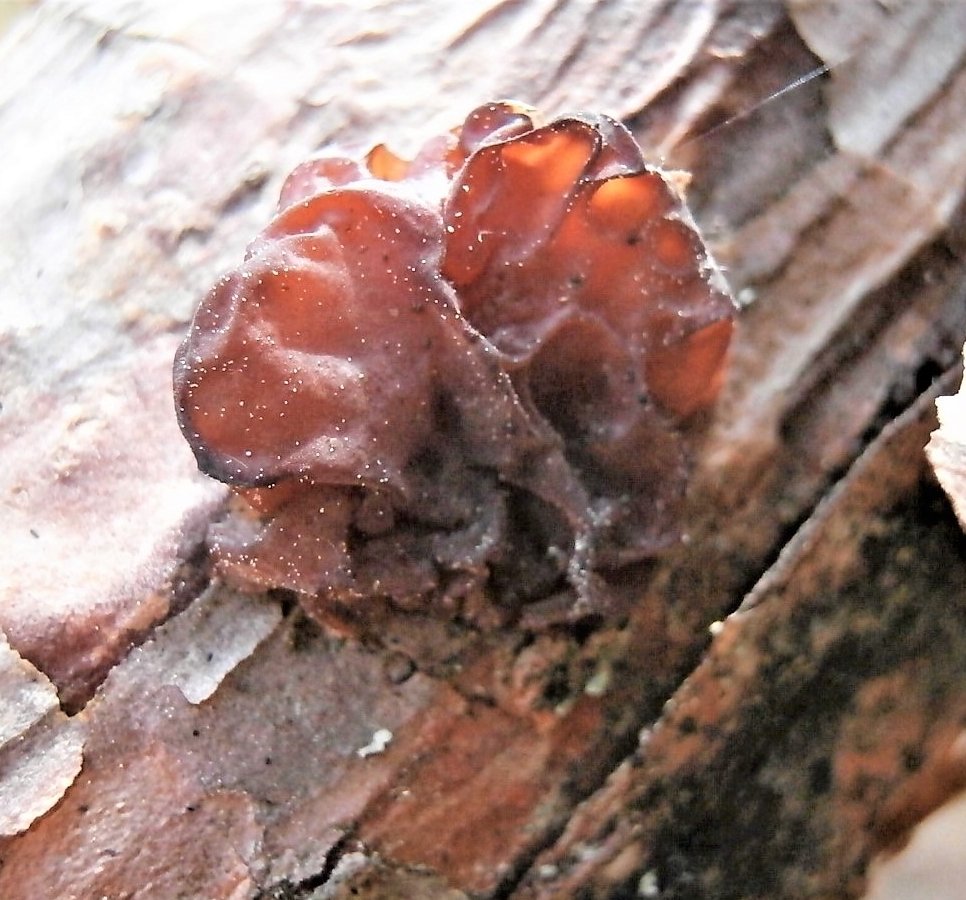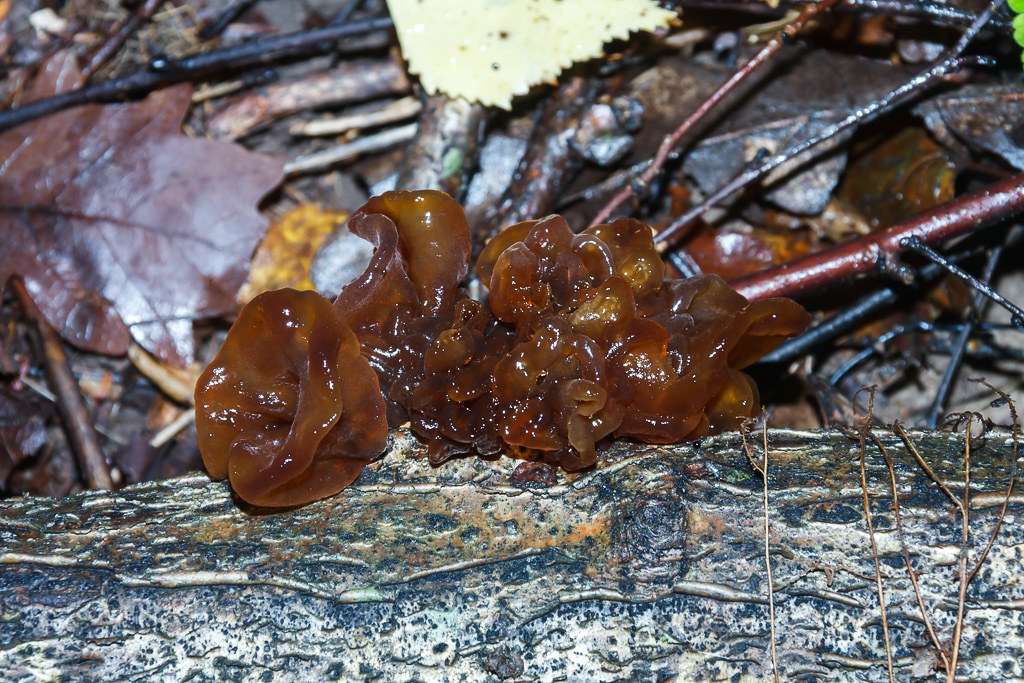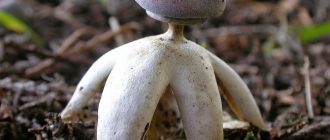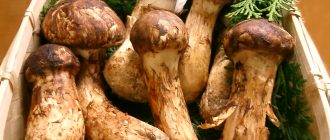Exidia
Exidia glandular exidia compressed
Exidia is a widespread species of the large Auriculariaceae family; these mushrooms grow in Russian forests almost everywhere. They have a pulp similar to dense jelly and an indefinite shape of fruit chalk. They have a characteristic feature, they dry out in heat / drought, in cool rainy seasons they swell again and grow actively. Therefore, they become noticeable only in autumn and spring, although they can appear in cold, damp summers. In our region, two species are often found, both prefer alder-willow thickets, I have tasted (raw!) No taste at all!
Exidia glandular (Exidia glandulos)

Exidia glandular on birch
It is sometimes called glandular tremor. Actually, it does not look like mushrooms at all, fruiting bodies are born in the form of shapeless dense gelatinous tubercles densely adhered to wood. Growing up, as a rule, they merge into irregularly rounded or elongated blotches with clearly defined edges. The surface is glossy with numerous winding folds and peculiar rounded mini outgrowths (lat. Carrier glands).
Elastic flesh, odorless and absolutely tasteless. Colors of all shades of brown and black. Spores form over the entire surface of the fruiting bodies; therefore, drying mushrooms are often covered with a whitish spore powder. They grow on fallen trunks and thick branches of deciduous trees. Drying, they turn into a thin smoothed crust. Exidia glandular is edible and they write that it even has medicinal properties. Only eat raw!
Exidia compressed (Exidia recisa)

In Latin, "recisa" stands for abbreviation

Exidia compressed on aspen
Compressed exsidia mushrooms are compact, small (1 - 2.5 cm). Fruit bodies are rounded, wrinkled, with uneven edges and tiny, barely noticeable legs or a narrowed base. The outer surface is matt, the inner spore-forming is smooth and shiny. mobile pulp is translucent, thin, without any taste or smell. The color of the fruit bodies is brownish-yellow, orange-brown or reddish-brown, usually grows in small families, but usually does not form intergrowths. When dried, compressed significantly decreases in size, shrinks, becoming a dull dark brown color. Grows on decaying deciduous trees / branches, preferring willow trees. These nondescript woody mushrooms have hardly been studied, so their edibility is not known. Poisonous species are not described among exsidia, they are simply not edible due to their small size, unappetizing appearance and hard gelatinous pulp.
APK "Vitus" - News
Birch dropsy (Erwinia multivora.)
In recent years, active foci of a poorly studied disease - bacterial dropsy of birch (Erwinia multivora Scz.-Parf.), Have been identified on the territory of the Russian Federation.
Cytosporosis of birch (Cytospora horr> Posted on 21.01.2020 by the author of APK
The causative agent is the mushroom Cytospora horrida Sacc. (marsupial stage - Valsa horrida Nits.), causes necrosis of the bark, drying out of individual branches and whole trees.
Exidia sugar (Ex> Published on 21.01.2020 by the author of APK
Head of the plant protection laboratory of AIC "Vitus" Sinelnikov K. Yu.
Specialists of the plant protection department of AIC "Vitus" carry out entomological and phytopathological examination of green spaces, develop individual plans for plant protection measures, treat green spaces with protective agents and carry out complex plant care.
Plant Protection Department of Agroindustrial Complex "Vitus"
8
Comparison of 3 types of exsidia: glandular exsidia, truncated exsidia and compressed exsidia
Head of the plant protection laboratory of AIC "Vitus" Sinelnikov K. Yu.
Specialists of the plant protection department of AIC "Vitus" carry out entomological and phytopathological examination of green spaces, develop individual plans for plant protection measures, treat green spaces with protective agents and carry out complex plant care.
Plant Protection Department of Agroindustrial Complex "Vitus"
8
Truncated exidia (Ex> Published on 21.01.2020 by the author of APK
Head of the plant protection laboratory of AIC "Vitus" Sinelnikov K. Yu.
Specialists of the plant protection department of AIC "Vitus" carry out entomological and phytopathological examination of green spaces, develop individual plans for plant protection measures, treat green spaces with protective agents and carry out complex plant care.
Plant Protection Department of Agroindustrial Complex "Vitus"
8
Exidia glandular (Ex> Published on 21.01.2020 by the author of APK
The causative agent is the mushroom Exidia glandulosa
Division: Basidiomycota (Basidiomycetes) Subdivision: Agaricomycotina (Agaricomycetes) Class: Agaricomycetes (Agaricomycetes) Subclass: Auriculariomycetidae Order: Auriculariales (Auriculariaceae) Family: Exidiae: Exidiaceae (Rhodes)
It is located on trunks with thin bark and large tree branches.
Photo: Mina acacia tail-bearing moth
Alder lurker - Cryptorrhynch> Posted on 16.12.2019 by the author of APK
a - an adult; b - an adult from the side; c - damage to the trunk with a larva; d - signs of damage to young alder; e - signs of a previous lesion on alder.
Dark-colored weevil, 6-9 mm long. The body is covered with dark brown, almost black scales with very short bristles. The shield is covered with white scales on the sides. The prothorax has a deep groove between the thighs, in which the rostrum is located. The larva is white with a brown head, legless, 10-12 mm long.
Willow diplodine necrosis (Diplodina microsperma)
Diplodine necrosis of willow trunks and branches (causative agent - the fungus Diplodina microsperma).
Photo: Sinelnikova K.Yu.
Synonyms: - Plagiostoma salicellum; - Septomyxa picea; - Cpyptodiaporthe salicella;
Diplodine necrosis of willow trunks and branches (causative agent - the fungus Diplodina microsperma) is a widespread and dangerous, but poorly understood disease. Continue reading →



































